None of us could never have possibly foreseen the journey on which we were embarking that hot, mosquito-ridden, afternoon in October 1986. On that auspicious Vijaya Dasami day, my parents, Mallik and Vasanta Putcha, presented me to two South Indian immigrant women, one a Karnatic singer and the other a Bharatanatyam and Kuchipudi dancer, to begin my training in music and dance. In an act of religious and ethnic identification, I was initiated into the Indian performance arts. I was shown how to hold my hands in a mudra, turn my feet out and hit them on the hard, white linoleum, and sing a series of ascending notes: Sa Re Ga Ma Pa Da Ni Sa.
This is me on that day in 1986, in a pose that repeats throughout family photo albums for the next decade or so: dancing for the camera, but looking at my mom or my guru who are directing the picture, if not the performance itself.
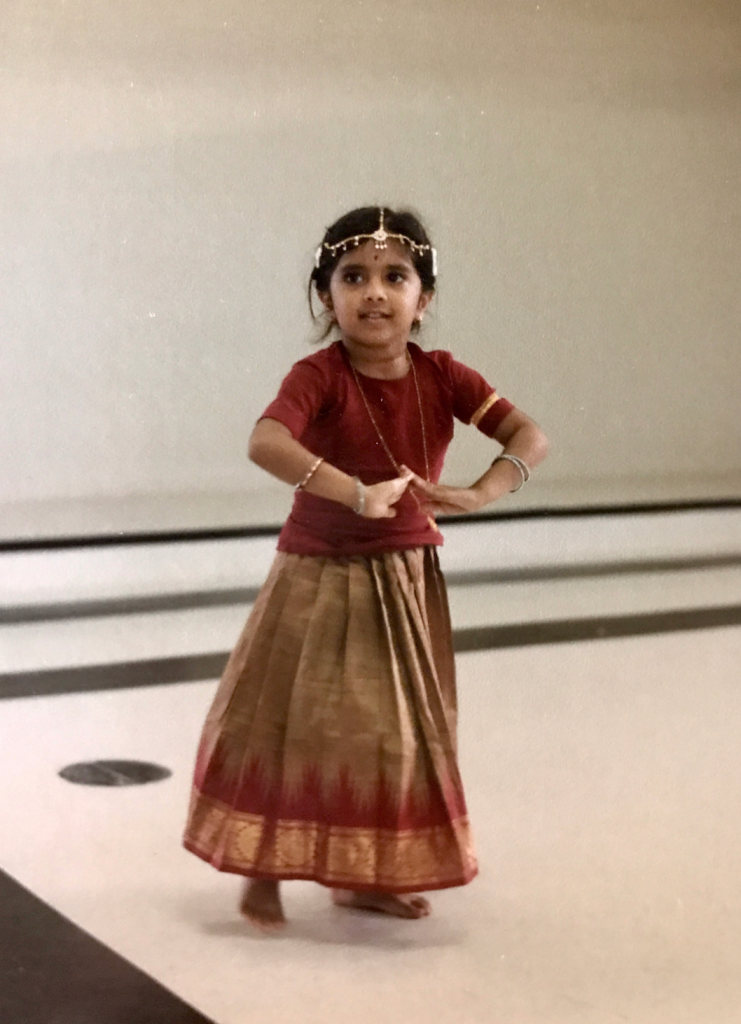
It’s striking to me now, looking back, that there aren’t any pictures of the singing portion of my young life considering each activity was designated an hour’s worth of lesson time each Saturday morning. It’s the dance pictures that made their way into family memories and then into my own psyche as a South Indian woman in the United States. The costumes, the jewelry, the extra-Hindu identity that a dancer performs all make for better photos, I suppose. Dance led to an acute sense of identity in ways music, especially singing, simply did not. The binary of music as personal and dance as public was instilled in my experience of identity and performance well before I had the tools to name it as such.
It is possible to pinpoint when I decided, definitively, that Indian vocal music was not for me. I was 11 years old and Disney’s Alladin had just been released. The film represented a turning point in as much as I would spend the next decade of my life with the nickname Jasmine—after all, she was the first notable pseudo-Indian-Arab woman to appear in a major American blockbuster film (one that I was allowed to watch, at least). Her character played an important role in representing an exotic and Orientalist femininity for Indian-American women, all while conveying the message that we must marry—that was the only and ultimate goal—and one that meant even more to our families than we could imagine. But Jasmine’s influence on my life, though meaningful for the gender and racial identity she represented, was something far greater. In that film, though Jasmine’s body is raced, cultured, and othered, her voice is not. It was a shock for me to see a Brown woman sing like a White one. In light of this revelation, I quietly taught myself the title song “A Whole New World” in the 6th grade. Though I was a violist in the orchestra, a kind junior high choir director, Ms. McLeod, indulged me one day after school when I wandered in from across the hall and let me sing for her. Realizing I had vocal training (she admitted to me years later that she desperately needed more altos), she moved to the piano and led me through a few vocal exercises, taking me down to notes I knew how to access with my Karnatic training, which relied upon what singers refer to as “chest voice.” But she also vocalized me up to notes I had never touched in my Karnatic training. As I climbed those scales, she pressed my abdomen with her hand, forcing me to brace my abdominal muscles—something I knew how to do from dance. In that moment I felt a sound ringing from my body I had never felt in my years of Karnatic training. It felt thrilling, powerful, uncensored, utterly freeing.
As I discovered my racial difference through choral music in the suburbs of Houston, my dance training proceeded with its own juggernaut momentum. My mother and guru had been laying plans for a grand debut solo performance, known as an arangetram, perhaps since before I was even able to walk. The immense planning came to fruition on November 23, 1991 when after months of 3-4 hour a day rehearsals, I performed a two-hour solo performance—a feat to demonstrate my mastery and skill in Bharatanatyam at the age of 10. Looking back, my memories of the experience are visceral and bittersweet. I cannot remember enjoying the process nor if that was ever the point. My memories are that of a child who might have had to grow up a little too fast. I remember the way my ankle bells would cut into my feet and how my Ammamma sewed blue velvet onto them so the abrasions wouldn’t get worse. The arangetram was an intense experience, and one that reflects how much my bodily labor as a public performer mattered to my parents and my community, even at an age when such a responsibility should never have been mine.
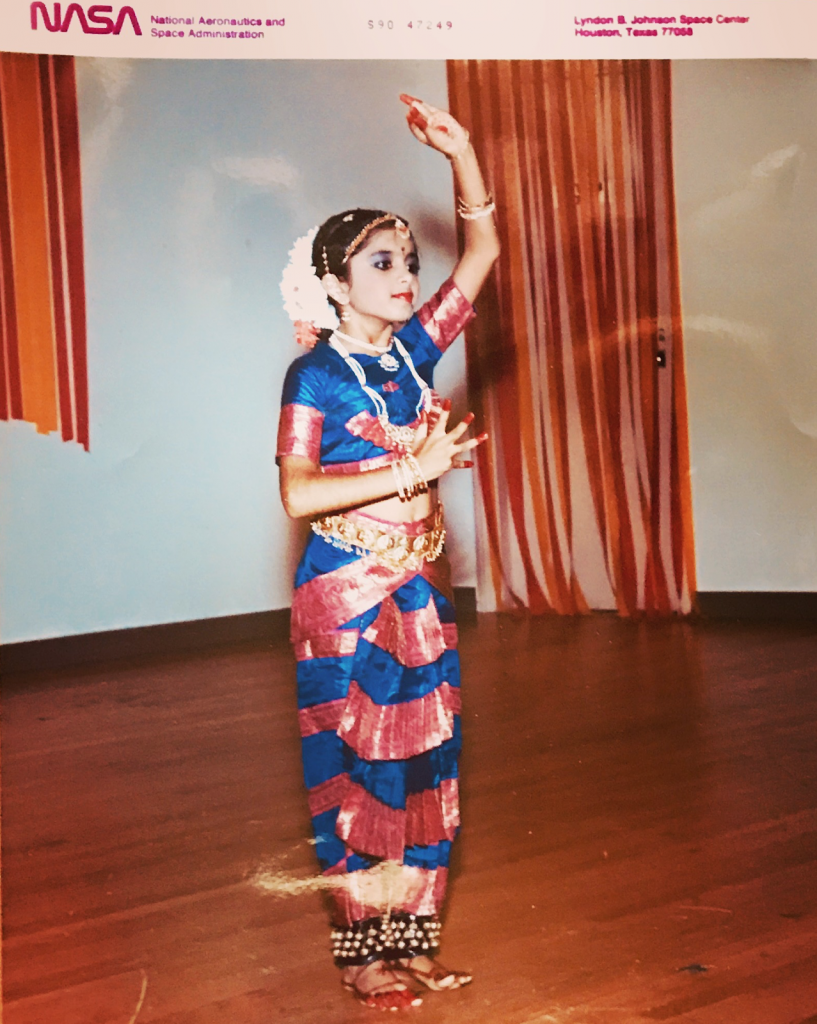
Author performing Bharatanatyam at a NASA-JSC event, 1989
Photo Source: Author
At this exact same juncture in my young immigrant life, I learned about the deep and abiding racial discrimination that permeates daily life in the United States. I did everything in my power to hide my dance life during the day at school for fear of being teased and bullied by students who enjoyed telling me on bus rides home about how their uncle was a Grand Wizard in the Ku Klux Klan and how he hated people like me. “Henna tattoos” might be all the rage today, but in 1991, I faced constant ridicule and shame at the red stains on my hands from dance performances. Looking back now, it makes sense that I found some belonging and safety in choir. It was a group activity, I could be anonymous, while still doing something I already knew how to do. In other words, joining choir was an excellent way to pass in my predominantly White Texas public school. But singing in a choir meant, more often than not in 1992, singing music rooted in the Christian faith. Though they eventually made their peace with it, for the decades to follow, up to and including my part-time job as a professional church singer in Hyde Park while I was a graduate student at the University of Chicago, my parents didn’t know what to make of my dual-identity as a Hindu dancer and a Christian singer.
Paradoxes aside, my story is not unique. I grew up, like so many other Indian-American women whose families turned dance into an identity and a religious edification, caught between two worlds, doing my best to accommodate the expectations of both. I became an expert in code switching. I internalized the messages I received from Indian immigrants, other racial minorities, and White Americans alike and learned the art of being Brown in America.
In college at the University of Chicago in 2001, I met a professor who introduced me to the idea of subculture—a revelation to me at the time—which seemed to capture my experience growing up middle-class, raced, but not Black, and among immigrants. His name was George Chauncey and to this day he remains the person I credit with turning an immigrant childhood of confusion into a transnational feminist journey. Under his supervision I wrote an undergraduate thesis titled “Beyond the Stage: Culture, Identity, and Dance in Indian America.” In tracing the path that brought me to writing this piece, I went looking for his comments on the thesis and found these words on an official feedback form from the Department of History:
“You argue persuasively that parents use dance to instill in their daughters a deeper appreciation of Indian culture and, indeed, to encourage them to “embody” some of its characteristic moral and bodily postures. Although the paper offers several interesting general characterizations of the history of this cultural practice, it would have been strengthened if you had explored the historical development of the practice more fully and in developing your own argument.”
It has taken me years to understand what George meant with this advice. It is hard to see yourself within a history as that history is unfolding. Even harder to develop an argument and a vocabulary that somehow pushes the existing narrative to some new revelation that could adequately explain the very moment in which I found myself—the first generation born and raised in the United States to immigrants who had only been allowed in because of the shifting loyalties of the Cold War and its subsequent Arms and Space Race. It was only much, much later that I could appreciate that the extreme double consciousness I felt as a non-Black, but Brown American was nothing like that experienced by my parents, who were born at the same moment India gained independence from the British. I learned, through their radio silence about racism, racial consciousness is not about seeing yourself like looking in a mirror, but instead, seeing what others see when they look at you.
Enter Ethnomusicology
Because the University of Chicago is a fairly tight-knit Humanities community, my thesis somehow found its way into the hands of a White and British anthropologist who studied Middle Eastern music the year after I graduated. He told me about a discipline called ethnomusicology over coffee one day in his home. Sitting in his living room surrounded by instruments the all seemed to belong in a museum, I learned about a discipline that focused almost exclusively on studying Brown and Black or previously colonized peoples. After completing an undergraduate degree in music which focused exclusively on the Western canonical tradition, this information felt like magic. Here was an intellectual tradition I could see myself in!
As I trace my journey today, however, I am acutely aware of the detours an academic life has required of me. Perhaps the most instructive: my work and therefore my relationship to dance was forever altered in 2009 when, after a year of marriage, I was forced to acknowledge my relationship was toxic and my husband was abusive. After a lifetime of performing ideal daughterhood and womanhood through dance, the process of removing myself from that destructive relationship and the intense sense of shame and failure that accompanied it kept me away from dance for years. The lack of awareness and support for women like me in the Telugu community, especially the Brahmin community, in the United States would strike me as shocking if it wasn’t coterminous with the crushing expectations of gender conformity and heteronormativity I already knew so well as a dancer. Indeed, one of the central tenets of my academic and activist work is that traditions reproduced for the sake of tradition simply perpetuate social ills like misogyny and gender violence. We live in kaleidescopic times, which require critical thinking, not blind faith in our caste or regional identity. Ultimately, my trajectory into academia reveals that for many of us born into the era of H1-B visas, citizenship has proven ephemeral and often traumatic. And so we must develop new tools, new ways of finding belonging. This is what I strive to do in my work and it is my ardent hope that somewhere out there, another generation of academic ammayylu are asking themselves “what do I want?” As we near Vijay Dasami in 2018, over three decades since my story began, this is my wish for them, to ask the questions in their own hearts, and to be heard on their own terms.
*

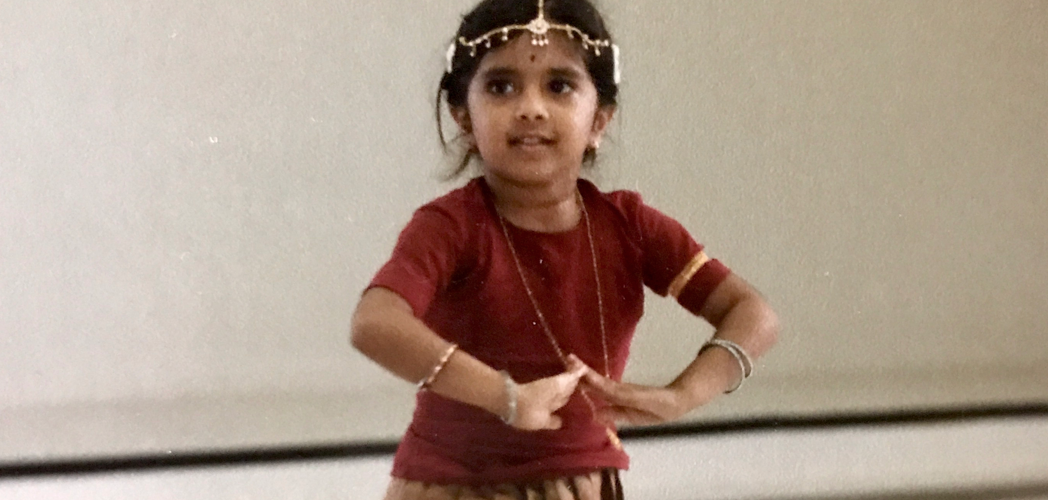



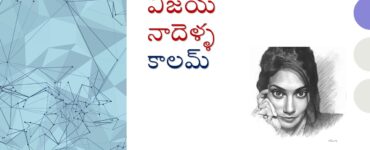
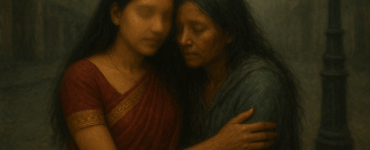

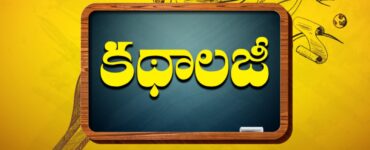
Great, Rumachee 🙏🙏🙏
Mom would have loved your reflections and introspection of that Vijaya Dasami day in 1986 🕉🕉
[…] retrospective—which will serve as a template for the prologue to my book. Here’s the link and I hope you’ll check it […]
It’s an interesting autobiographical reflection. Thanks for sharing!